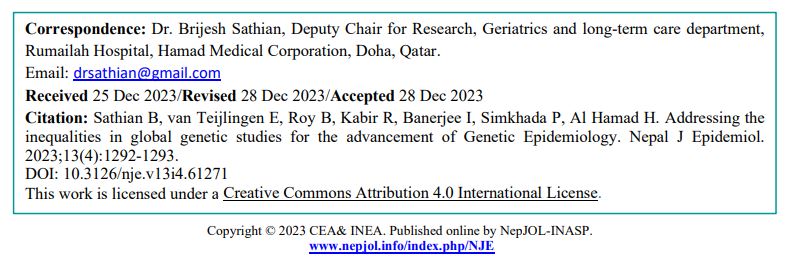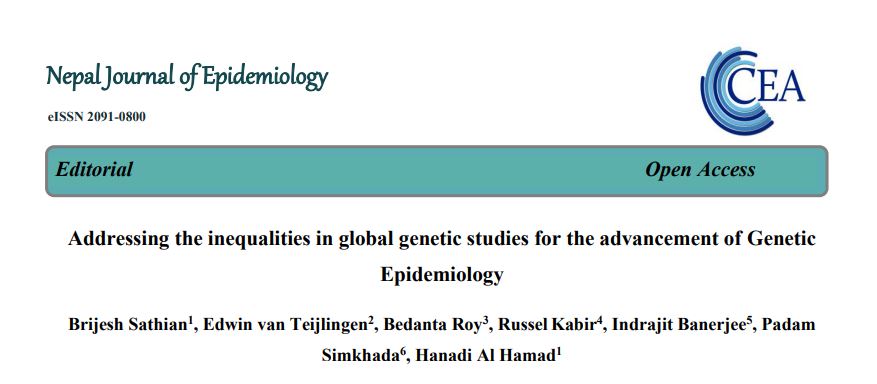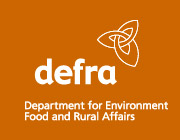One of the first message I received this morning was that our editorial ‘Addressing the inequalities in global genetic studies for the advancement of Genetic Epidemiology’ [1] had been published yesterday. If I had know this in time it would have been the proper last Bournemouth University Research Blog of 2023 published yesterday. Interestingly, we only submitted the draft editorial on Christmas Day, got it back for revisions on Boxing Day and resubmitted it and had it accepted on December 28th. It dis, of course, help that both editors-in-chief of the Nepal Journal of Epidemiology are co-authors on this editorial!
Prof. Edwin van Teijlingen
Centre for Midwifery & Women’s Health (CMWH)
Reference:
- Sathian, B., van Teijlingen, E., Roy., B., Kabir, R., Banerjee, I., Simkhada, P., Al Hamad, H. (2023) Addressing the
inequalities in global genetic studies for the advancement of Genetic Epidemiology. Nepal Journal of Epidemiology, 13(4):1292-1293.
DOI: 10.3126/nje.v13i4.61271















 Conversation article: Why so many people drown at the water’s edge
Conversation article: Why so many people drown at the water’s edge Workshop on longitudinal studies in three countries
Workshop on longitudinal studies in three countries New Bournemouth University public health paper
New Bournemouth University public health paper New ACORN-funded paper published. When time is short but passion for food is strong, food day-tripping may be the answer!
New ACORN-funded paper published. When time is short but passion for food is strong, food day-tripping may be the answer! Royal Society of Chemistry Outreach Fund: Open for Applications
Royal Society of Chemistry Outreach Fund: Open for Applications Last reminder – MSCA Postdoctoral Fellowships 2024 internal deadline next week
Last reminder – MSCA Postdoctoral Fellowships 2024 internal deadline next week Horizon Europe – EuroHPC and MSCA PF webinars
Horizon Europe – EuroHPC and MSCA PF webinars